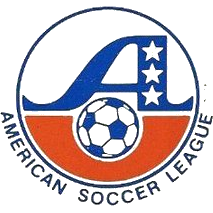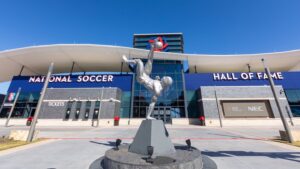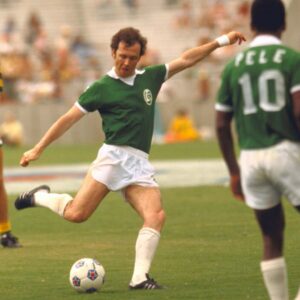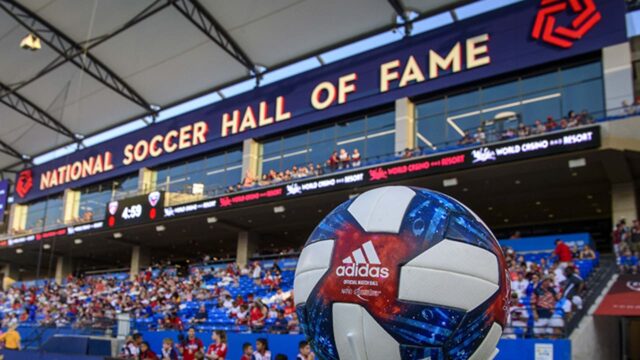One could easily assume that the most popular team sports in the United States – the nation’s Top Three (football, basketball and baseball)- have also the oldest halls of fame. This is partly true. The oldest of all is the National Baseball Hall of Fame, established in 1936, in New York, followed by a sport whose current professional league is the newest among other sports in the USA: soccer.
MLS was founded just in 1996, while MLB came to life in…1876 (as the National League), NHL in 1917, NFL in 1920 and NBA in 1946. Of course there have been various professional soccer leagues before the Major League Soccer’s introduction in the mid 90s. Those leagues trully contributed to the developement of the sport, but the MLS was the one that has pushed soccer to another level over the course of the past 10 years. And soccer has been long heralded as the sport of America’s future, nearly matching baseball’s popularity!
Below is the ranking of America’s favorite spectator sports according to Philly Voice’s 2017 Gallup poll.
- Football 37%
- Basketball 11%
- Baseball 9%
- Soccer 7%
- Ice Hockey 4%
The American Soccer League (1921)
The first significant and viable professional soccer league in the U.S. was the ASL (American Soccer League) which lasted from 1921 until 1933. Its popularity even rivalled that of the NFL!
Unfortunatley, disputes with the USFA and FIFA ultimately led to the league’s collapse in 1933. But, during those 13 seasons several clubs left their mark in the American soccer history: Fall River Marksmen from Massachusetts, NY Giants, New York FC (1916-1924), Bethlehem Steel (1907-1930) and Brooklyn Wanderers (1895-1933). Prior to ASL’s establishment, several semi-professional leagues existed like the NAFL (1895-1898).
Straight after the original ASL folded in 1933, a successor league under the same name was founded and lasted for 50 years (1933-1983). The main difference to the original league was the much smaller budgets and the introduction of new -short lived- clubs.
League soccer in the States not only was popular during the 1920s and 1930s but had a great impact on the national team’s development and success. Plenty of experienced players from overseas -mainly the British Isles- had joined the ASL attracting bigger crowds to the stadiums. Team USA reached the seminfinals of Uruguay’s inaugural 1930 World Cup, with Bert Patenaude scoring 4 goals and finishing third on the table behind Guillermo Stabile and Pedro Cea. The 1930 performance is still the best result for the United States in a World Cup tournament.

The second oldest American Hall of Fame
Baseball has seen itself as America’s game for over a century and it came as no surprise when the National Baseball Hall of Fame was established by Stephen Carlton Clark back in 1939: the first of any sport in the U.S. Eleven years laters, it was soccer’s turn to establish its own HoF. It was founded in 1950 by the Philadelphia “Old-timers” Association, a group of former professional and amateur soccer players who had already enjoyed the sport’s ”golden” era in the 1920s and 1930s. Their aim was clear: to recognize the achievements of soccer in America, in a manner similar to baseball’s HoF.
The first players entered the Hall of Fame were: Billy Gonsalves, Sheldon Govier, Jock Ferguson, Peter Wilson, Harry Ratican, Robert Millar, Millard Lang, Dick Spalding and Archie Stark. Apart from players there was another category of contributors to be honored, the ”builders”, consisted of coaches, owners and administrators. The first builders to enter the inaugural ”Class of 1950” were George Kempton, Horace Edgar Lewis and G. Randolph Manning. Another category, the ”veteran players” was added in 2010.
In 1998 a new award was announced, the Medal of Honor: the highest honor given to people who have grown the sport in the United States. It has been given out only four times in history. The medal holders are: Alan Rothenberg (1998), Lamar Hunt (1999), the 1991 Women’s national team (2001) and Phil Anschutz (2006).
The Hall of Fame was established as institution in 1979 and its museum opened on June 12, 1999 in Oneonta, New York. It is currently located in Toyota Stadium in Frisco, a suburb of Dallas.
For the record, the Naismith Memorial Basketball Hall of Fame was established in 1959, the (Canadian) Hockey Hall of Fame in 1943 and the Football HoF in 1963.

The Magnificent Five
Tommy Fleming, Alex McNab, Johnny Nelson, Werner Nilsen and Fabri Salcedo played soccer in the early 20th century and they are now considered five of the most influential American pre-war players. But the lack of records of that era meant that the “Magnificent Five” would be largely ignored by the Hall of Fame experts for decades. The acquisition of a large volume of historical records relating to this period in the 2000s combined with previously developed eligibility criteria led to their induction posthumously in August 2005.
Outside forward Tommy Fleming (born in 1890) played soccer from 1906 until 1929 and won five American Cups, four National Challenge Cups (U.S. Open) and eight league titles. The American Cup was the first major national cup competition in the States (1885-1924).
Scottish wing forward Alex McNab (born in 1894) signed for Boston S.C. from Grennock Morton in 1924 and played in the States until 1939, aged 46! McNab won six consecutive National Challenge Cups with teams from both the American Soccer League and St. Louis Soccer League. He also won the Scottish Cup in 1922 against Glasgow Rangers and earned two caps with the Scotland national team in 1921.
Center forward Johnny Nelson (born in 1905) played only from 1922 until 1931 and retired as the second leading scorer in the history of the first American Soccer League! Unfortunately, a knee injury on April 5, 1931, ended his career at the age of 26. He scored 213 goals in 246 league games. He mainly played for Fall River Marksmen, Brooklyn Wanderers and NY Giants.
Werner “Scotty” Nilsen (born in 1904) played for local club Skiens Grane in Norway before moving to the United States in 1923. He first signed for Norwegian-Americans and then joined Fall River Marksmen, NY Yankees, Boston S.C.(86 goals in 164 league matches) and other American clubs. He won five consecutive National Challenge Cups and four doubles. He also earned two caps with the United States in 1934 -one at the 1934 FIFA World Cup– before retiring in 1938.
Spanish forward Fabriciano Salcedo (born in 1914) signed for Brooklyn Hispano in 1934 and spent thirteen seasons in the American Soccer League, leading the league in goal scoring three times. He then played in the St. Louis Soccer League and part of one season in the National Soccer League of Chicago. He retired with Philadelphia Americans in 1948.
Eligibility
New individuals are inducted through an annual ballot, although the HoF was not very consistent in strict annual inductions prior to 1996. To be eligible in the Player category, a candidate must have met number 1 and either number 2 or number 3 of the following three criteria:
- Retired as a player for at least three years, but for no more than 10 years.
- Played at least 20 full international games for the United States. This requirement is reduced to 10 games if the games were prior to 1990.
- Played at least five seasons in an American first-division professional league (currently MLS or NWSL), and won either the league championship, or the U.S. Open Cup, or selected as a league all-star at least once.
For players who have met either 2 or 3 criteria, but retired more than 10 years ago are automatically placed on the veteran eligibility list.
Players’ Classes
Below are the Hall of Fame’s classes from 1950 until 2022.
CLASS OF 1950
Billy Gonsalves
Sheldon Govier (Scotland)
Jock Ferguson (Scotland)
Peter Wilson (Scotland)
Robert Millar (Scotland)
Millard Lang
Dick Spalding
Archie Stark (Scotland)
CLASS OF 1951
Harold Brittany (England)
Davey Brown
Thomas Swords
Peter Renzulli
Robert Morrison (Scotland)
William Fryer (England)
Johnny McGuire (Scotland)
CLASS OF 1952
George Tintle
CLASS OF 1953
Johnny Jaap (Scotland)
CLASS OF 1954
Jimmy Douglas
Aldo Donelli
CLASS OF 1955
Tommy Duggan
CLASS OF 1958
Francis Ryan
CLASS OF 1959
Ralph Caraffi
CLASS OF 1963
Rudolph Kuntner (Austria)
CLASS OF 1965
Fred Beardsworth (England)
Teddy Glover (England)
CLASS OF 1966
Stanley Chesney
CLASS OF 1968
Arnie Oliver
CLASS OF 1971
Bert Patenaude
Gene Olaff
CLASS OF 1973
Joseph Gryzik (Poland)
CLASS OF 1974
Werner Mieth (Germany/USA)
Nicholas DiOrio
Jimmy Dunn
CLASS OF 1975
Alex Weir (Scotland)
CLASS OF 1976
Robert Annis
Walter Bahr
Frank Borghi
Adam Wolanin (Poland)
Charlie Colombo
Geoff Coombes
Frank Wallace
Ed Souza
John Souza
Gino Pariani
Ed McIlvenny (Scotland)
Joe Maca (Belgium)
Harry Keough
Joe Gaetjens (Haiti)
Gino Gardassanich (Croatia)
CLASS OF 1977
Jack Hynes (Scotland)
CLASS OF 1978
Al Zerhusen
Raymond Bernabei
CLASS OF 1979
Al Harker
CLASS OF 1980
John Boulos (Haiti)
CLASS OF 1981
Benny McLaughlin
CLASS OF 1982
Joe Carenza, Sr.
CLASS OF 1983
George Barr (Scotland/USA)
CLASS OF 1986
Andrew Auld (Scotland)
Mike Bookie
Jim Brown (Scotland/USA)
Frank Vaughn
Alexander Wood (Scotland)
Raphael Tracey
Philip Slone
George Moor House (England)
Bart McGhee (Scotland/USA)
Thomas Florie
Jimmy Gallagher (Scotland/USA)
James Gentle
CLASS OF 1989
Walter Dick (Scotland)
Werner Roth
Willy Roy (Germany/USA)
Bob Gormley
CLASS OF 1990
Shamus O’brien (Scotland/USA)
CLASS OF 1991
Rudy Getzinger (Austria/USA)
CLASS OF 1992
Werner Fricker (Germany/USA)
Efrain Chacurian (Argentina)
CLASS OF 1993
Pelé (Brasil)
John Nanoski
CLASS OF 1994
Pat McBride
Lloyd Monsen
CLASS OF 1995
Willy Schaller (Germany/USA)
George Brown (England/USA)
CLASS OF 1996
Paul Danilo
Nicholas Kropfelder
Len Oliver
CLASS OF 1997
Jimmy Roe
Johnny Moore (Scotland/USA)
Robert W. Craddock
Alex Ely (Brazil!/USA)
CLASS OF 1998
Franz Beckenbauer (Germany)
Ed Murphy (Scotland)
April Heinrichs (female)
CLASS OF 2000
Carin Jennings-Gabarra (female)
Giorgio Chinaglia (Italy)
CLASS OF 2001
Rick Davis
William Looby
CLASS OF 2002
Adolph Bachmeier
Vladislav Bogićević (Yugoslavia)
Shannon Higgins (female)
CLASS OF 2003
Paul Child (England)
Karl-Heinz Granitza (Germany)
Bob Lenarduzzi (Canada)
Arnie Mausser
Patrick Ntsoelengoe (South Africa)
Alan Willey
Bruce Wilson
CLASS OF 2004
Michelle Akers (female)
Paul Caligiuri
Eric Wynalda
Mike Windischmann (Germany/USA)
CLASS OF 2005
Marcelo Balboa
Fernando Clavijo
Tommy Fleming
John Harkes
Alex McNab (Scotland)
Glenn Myernick
John Nelson (Scotland/USA)
Werner Nilsen (Norway)
Fabri Salcedo (Spain)
Tab Ramos
CLASS OF 2006
Alexi Lalas
Al Trost
Carlos Alberto Torres (Brazil)
Carla Overbeck (female)
CLASS OF 2007
Julie Foudy (female)
Bobby Smith
Mia Hamm (female)
CLASS OF 2008
Hugo Perez (El Salvador/USA)
CLASS OF 2009
Jeff Agoos
Joy Fawcett (female)
CLASS OF 2010
Thomas Dooley
CLASS OF 2010
Preki (Yugoslavia)
Kyle Rote, Jr.
CLASS OF 2011
Earnie Stewart
Cobi Jones
Eddie Pope
Bruce Murray
CLASS OF 2012
Tony Meola
Claudio Reyna
Desmond Armstrong
CLASS OF 2013
Peter Vermes
Joe-Max Moore
CLASS OF 2014
Kristine Lilly (female)
Brian McBride
CLASS OF 2015
Kasey Keller
CLASS OF 2016
Brandi Chastain (female)
CLASS OF 2016
Shannon MacMillan (female)
CLASS OF 2017
Briana Scurry (female)
CLASS OF 2018
Tiffany Milbrett (female)
Cindy Parlow (female)
Brad Friedel
CLASS OF 2019
Abby Wambach (female)
CLASS OF 2020
Carlos Bocanegra
CLASS OF 2022
Clint Dempsey





